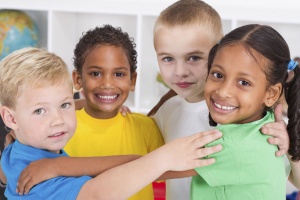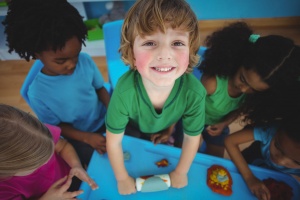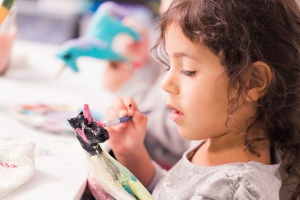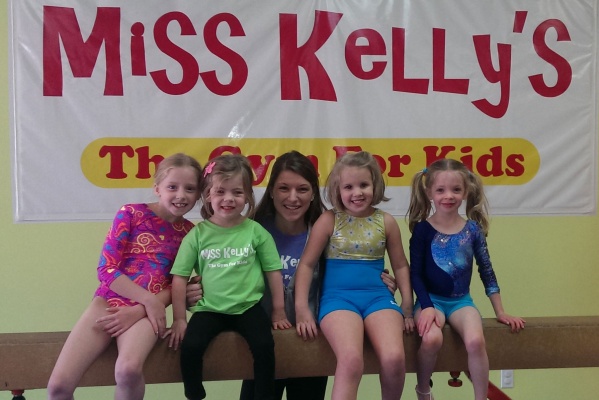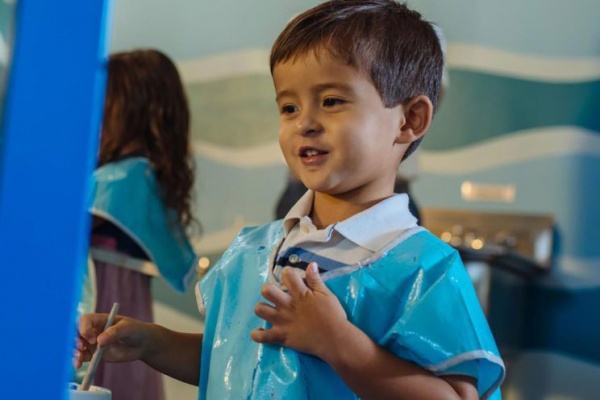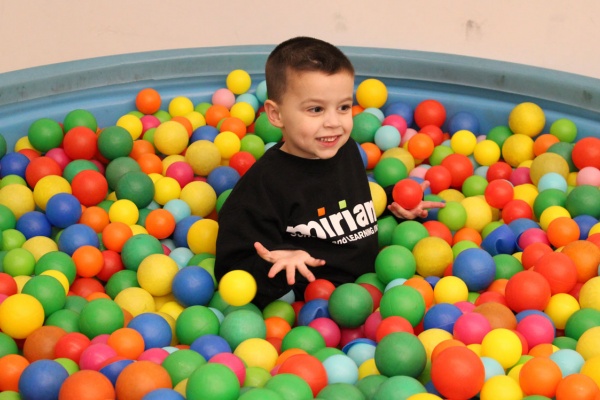

How to Lessen the Impact of Social Isolation on Your Child's Mental Health
After six months of lounging around the house thanks to the pandemic lurking outside, my daughter was excited to start her first day of hybrid middle school. For my extrovert, the idea she could see a handful of her friends two days a week was thrilling. More important, because of her struggles with anxiety and depression, the promise of a routine and set expectations was calming after half a year of the unknown.
She thrived at school. She had friends she could talk to, specialists on hand to help her with her learning difficulties, and afternoons of cheerleading practice. Sure, the remote days were a struggle for her work-at-home parents who had to drop what they were doing to relearn sixth-grade algebra, but our sanity was a small price to pay to protect hers.
Then November hit. As more and more classes were quarantined due to COVID-19, the district made the difficult decision to go fully remote after Thanksgiving. The seclusion from classmates and the loss of structure, not to mention the gloomy winter weather on top of it all, was too much for her to handle. She quickly tumbled into a hole so deep and dark, the rest of the family fell in after her.
As almost any parent, pediatrician and therapist can tell you, my daughter isn’t alone when it comes to the impact of isolation. According to the Centers for Disease Control, over the past year, pediatric mental health emergency room visits increased 24 percent for elementary students and 31 percent for teens. And the struggle won’t magically disappear once the world opens back up – studies show loneliness in children is associated with future mental health problems up to nine years later.
This need for regular socialization all comes down to nature – we are biologically human wolf packs who need to connect with each other, especially in our early years.
“One of the ways children learn about the world around them is through interactions with peers in social and academic settings,” explained Jennie Wilson, LPC of Step by Step Counseling. “It’s through these peer interactions that children can better learn how to express their needs and ideas to others, work towards a common group goal, develop a deeper understanding of the needs of others, and learn new approaches to problem-solving. Although virtual interactions are crucial for us to stay connected during a pandemic, they don’t compare to the developmental benefits of in-person, peer interactions for children.”
The Warning Signs and Steps to Help
Let me say this right off the bat – I’m not a parent who demands that schools reopen. Until the vaccine is available to all educators, I’m scared for my family members and friends who are teachers and administrators. But it also means I have to be extra vigilant when it comes to watching my child’s mood shifts day to day and finding ways to help her.
• Keep an eye out for the effects of social isolation. Kids are good at hiding their feelings – or on the flip side, letting their emotions out through meltdowns or anger. According to Shanon Harlow, Psy.D, a licensed clinical psychologist with Understanding Minds Psychological Services, parents should watch out for the following warning signs in their children: sleeping more or less, eating more or less, irritability, a decline in school performance, decreased interest in activities, social withdrawal, irritability, ongoing sadness, self-destructive talk or behaviors, excessive reassurance seeking, and difficulties separating from loved ones.
• Be aware of issues that can make disconnection even harder and vice versa. The loss of a loved one due to COVID-19, a child’s grief over missing out on important milestones like their sports season or senior year, or their worries about their family’s financial security if a parent loses a job, often increase the intensity and frequency of a child’s anxiety or depression.
“We need to give children and adolescents the space to feel their losses,” said Dr. Kendra Krietsch, a pediatric psychologist at St. Louis Children’s Hospital. “While it is difficult for us as adults to see our children in pain, feelings like sadness, anger, jealousy, and other complicated feelings are normal and expected responses to loss – whether it be the loss of a loved one or of a milestone they were looking forward to. We, as adults, can show our kids that it’s OK to have complicated feelings during times like these. Try to restrain yourself from avoiding or glossing over these conversations, ‘looking on the bright side’ or reframing the situation for your child until they have had the chance to fully explain how they feel. Grief is not linear – it is cyclical, meaning, you will likely have these conversations about loss and grieving over and over.”
• Find new ways to connect. My older daughter in high school has adjusted well to stay at home guidelines since she’s on FaceTime with her friends every moment she’s not in class. For younger kids, parents often have to make the connection. Set up Zoom playdates with your children’s friends or ask your fellow parents to log in their kids to parent-supervised Netflix or Disney + online watch parties. But also find ways to limit their reliance on screen time - on warmer days, I push my kids out the door so they can join socially distanced fun, like skateboarding and biking, and let the sun rev up their serotonin levels for a quick mood booster.
For older students who need additional help, online support groups are also available to ease the impact of isolation. Understanding Minds, for instance, has launched a High School Motivation and Resilience Building Group, which provides students the opportunity to share their experiences, process barriers to motivation, and engage in hands-on activities with the goal of building resilience during these uncertain times. Parents can learn more by calling 314-729-1200 or emailing clients@understandmindsstl.com.
• Create structure and routine for your child. As much as they can deny it, children thrive when there’s a schedule in place. “Structure and routine actually clear up mental space to make decisions or learn efficiently so we can dedicate brain power to what’s important,” Dr. Krietsch shared. “It also sends the message to our bodies and brains that ‘we are going to get through this,’ especially for those of us working or schooling from home.”
She suggested treating your days the same way you would if you were heading to in-person work or school by setting alarms, opening window shades and getting out of your PJs. In addition, create “daily anchors,” such as making breakfast in the morning, taking a brisk walk in the afternoon, and playing a game after dinner each night, as well as “weekly anchors” like Taco Tuesday or Saturday morning pancake breakfasts.
“Anchors are behaviors that we do around the same time of day or week, and they help cue our brains that time is passing. They give us something to look forward to and also show us that nothing lasts forever.”
Finally, because spending all day in their bedroom can enable a child’s withdrawal and further isolation, set the expectation that they spend plenty of time outside their bedroom doors. Dr. Krietsch recommended parents keep screens out of the bedroom, suggest that their child do homework in another part of the house, and do not allow them to eat meals in their room. Encourage them to take breaks and get outside, and for older teens, ask them to drive you on errands.
• Develop coping mechanisms. God did not bless me with the patience to be a puzzle person, but dang it, we’ve spent hours huddled over puzzles since they gave my daughter an outlet to calm down and concentrate on something constructive when she was in meltdown mode. Granted, I gritted my teeth with every puzzle piece hunt, but it was a calming, bonding family activity that steered her away from potential meltdowns.
Wilson suggested that when you do find coping mechanisms that work, add them to your child’s “toolbox.” Explained Wilson, “A ‘toolbox’ in the mental health world is a mental container of coping skills, calm down strategies, or tools that can help feel calm whenever feeling anxious or sad. There are so many cool resources that you can add to your toolbox, so we would recommend learning the skills that work the best for you, so you can break them out of the toolbox when needed!”
• Address your child’s needs – and your own! Admittedly, I haven’t always modeled good behavior. As someone battling my own anxiety, dealing with someone else with the same symptoms often morphs into a challenge of wills. It’s hard to remind yourself that as sad as you are, isolation hits a child even harder.
“During these difficult times, parents shouldn’t be afraid to check in with their children about how they are feeling,” Dr. Harlow remarked. “It’s helpful for parents to normalize the difficulties people are having, validate their children's feelings, and talk about what their children need to feel better and supported. Create a plan with your child to help address their needs, including seeking out a licensed mental health professional to guide you if you as a parent need support as well.”
How you check in can depend on your family’s dynamics. Said Dr. Krietsch, “For some families, this is truly a weekly scheduled family check-in where everyone in the family talks about how they’re doing. For other families, it’s much more fluid and may happen on car rides to school, while cooking dinner together, or before tucking their child in for bed. This may be a better option for kids who are shy about talking about their feelings. If you are spending a lot of time with your family and it feels like there’s nothing additional to talk about, try scheduling a family walk where everyone leaves their phones at home a couple times a week. Sometimes, just getting out of the environment where you typically spend all your time can make it easier to talk about how we’re doing.”
• Create a community for all children who are suffering. Children who are most vulnerable to the impact of COVID-19 – those in marginalized communities or facing financial hardship – often have less access to essential services. For many, school was their main connection to mental health resources.
As Wilson explained, the school and the community need to work collaboratively to ensure every child is safe and gets what they need, including tutoring or academic support, devices to connect virtually, basic resources for education, and counseling and mentoring,
“Not only does community outreach help with giving the kids what they need for school, but it allows the staff to understand that there are barriers to learning that are coming to the surface. It also allows the staff to be able to connect with these students and gain more insight on what their home life is like, and what the school can do to assist the student and family who are in need of further help. We need to understand that not every child has access to the internet, food, or basic resources such as paper and pencils needed for class. We need to meet them where they are. We need to assess their needs for how they can continue to succeed in school despite COVID-19 and those restrictions.”
If you are a parent of a child who is facing issues due to isolation, keep in close contact with their school to see what resources are available, especially if your child has an IEP, they are facing challenges at home or if mental health issues grow. If you are in a position financially to help others, consider donating to local nonprofits that are helping to provide additional connections once the school day is over for children most at risk of isolation, including Youth in Need, Better Family Life, Boys & Girls Clubs of Greater St. Louis, and Midtown Community Services.
• Reach out for professional help. The growing number of children who need mental health care during the pandemic means the demand on counselors and therapists has skyrocketed – which in turn means getting help is harder to find. However, both Step by Step (636-255-0002) and Understanding Minds (314-729-1200) have telehealth appointments available now. In addition, the St. Louis Children’s Hospital Teen Helpline at 314-454-TEEN offers trained facilitators who can direct parents of older children to useful mental health resources and referrals. Children’s Mom Docs blog also discusses various health and wellness topics related to COVID-19.
Through a combination of online therapy, medication adjustments, and OK, let’s face it, her school reopening in January, my daughter was able to slowly cope with the ongoing changes COVID-19 sprung on her. As the weather gets warmer, vaccinations become more widespread, and limitations on activities ease up, I know brighter days are ahead. And hopefully, fewer puzzles in our future.
Writer’s note: As a parent, I want to protect my child’s privacy. However, she wanted to share her story to let other families know they’re not alone. She has given permission for this piece and has reviewed the content.

Metro East mom Nicole Plegge has written for STL Parent for more than 12 years. Besides working as a freelance writer & public relations specialist, and raising two daughters and a husband, Nicole's greatest achievements are finding her misplaced car keys each day and managing to leave the house in a stain-free shirt. Her biggest regret is never being accepted to the Eastland School for Girls. Follow Nicole on Twitter @STLWriterinIL

